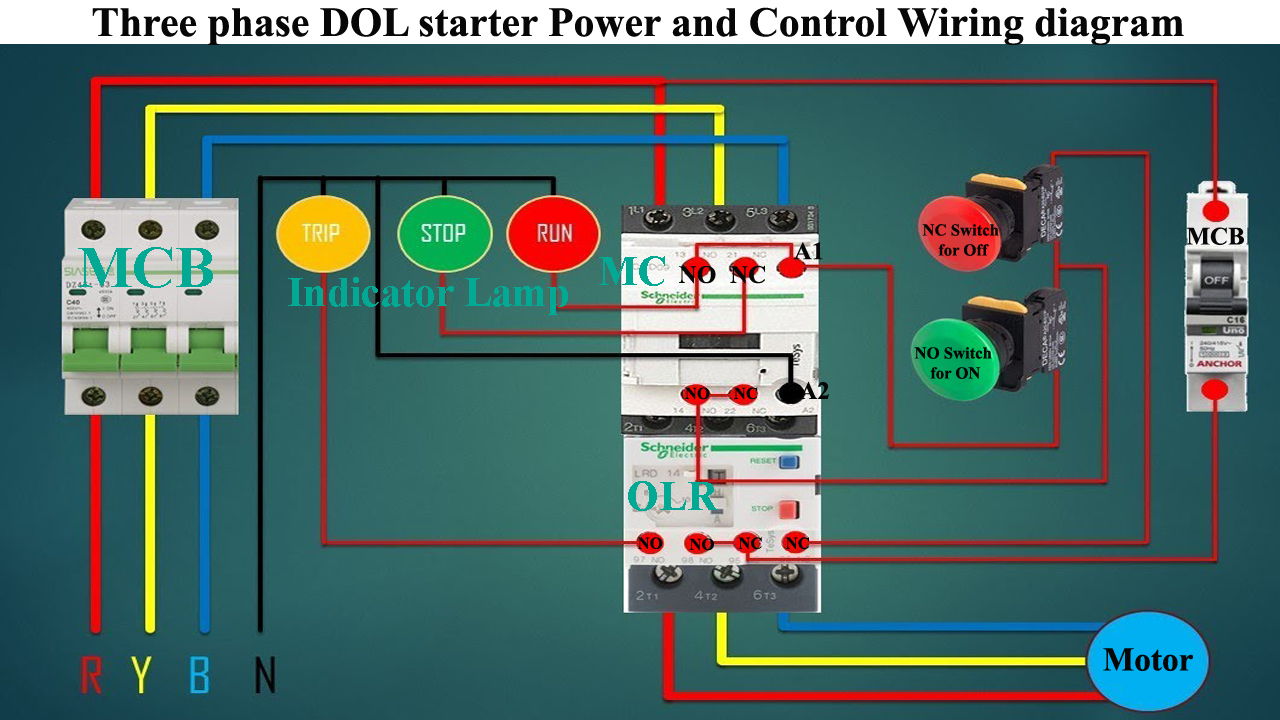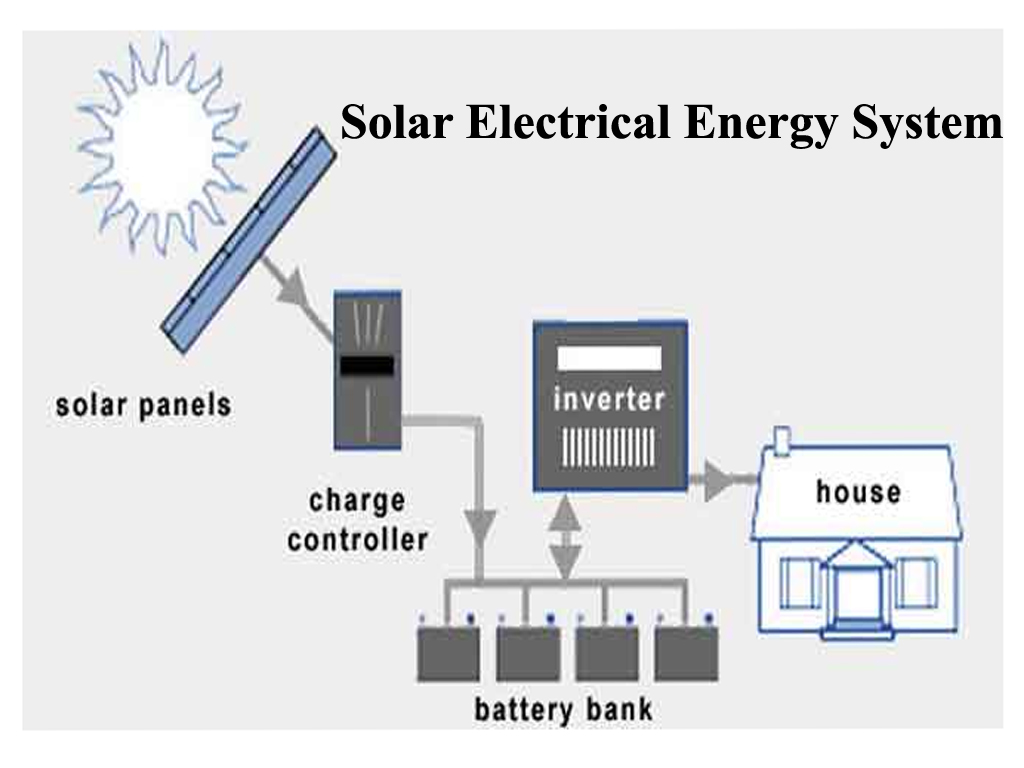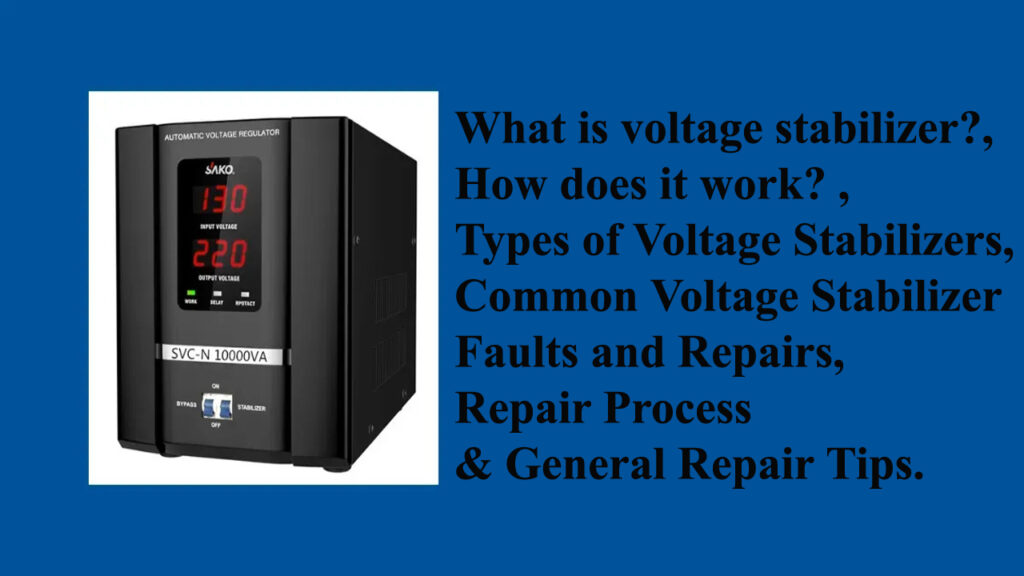What is Direct Online (DOL) Starter?
A Direct Online (DOL) Starter is a straightforward and cost-effective method for starting small three-phase induction motors, typically rated up to 5 horsepower (HP). It connects the motor directly to the full supply voltage, making it ideal for applications where high starting torque is necessary and the electrical network can accommodate the inrush current. A Direct Online (DOL) starter, also known as an across-the-line starter.

⚙Components of a DOL Starter:
- Magnetic Contactor: The main switching device that connects and disconnects the motor from the power supply. It has main contacts for the power circuit and auxiliary contacts for the control circuit.
- Overload Relay (OLR): Protects the motor from damage due to prolonged overcurrent conditions or overloads that can cause overheating. If an overload occurs, the OLR trips, interrupting the control circuit and de-energizing the contactor, thus stopping the motor.
- Miniature Circuit Breaker (MCB) or Fuses: Provide short-circuit and overcurrent protection to the entire starter and motor circuit.
- Start and Stop Push Buttons: Used by the operator to initiate and stop the motor. The start button is normally open (NO), and the stop button is normally closed (NC).
- Wiring and Terminals: For connecting the various components.
- Pilot Lamps: Indicate the status of the motor (e.g., running, stopped, tripped).
- Auxiliary Contacts (additional): For interlocking with other control circuits or providing status signals.
How it Works:
When the operator presses the “start” button, the contactor coil is energized, closing its contacts and allowing full supply voltage to reach the motor. The motor starts to rotate, drawing a high starting current (typically 5 to 8 times the normal full-load current). An auxiliary contact on the contactor, connected in parallel with the start button, also closes when the contactor energizes. This creates a latching circuit, ensuring that the contactor remains energized even after the operator releases the start button, keeping the motor running. The Overload Relay monitors the current; if it exceeds a preset limit, the relay trips, disconnecting the motor to prevent damage. Pressing the Stop button de-energizes the contactor, cutting off the power and stopping the motor.

✅ Advantages
- Simplicity: Easy to install and operate.
- Cost-Effective: Low initial investment.
- High Starting Torque: Suitable for applications requiring high torque.
- Reliability: Proven technology with minimal maintenance.
❌ Disadvantages
- High Inrush Current: Can cause voltage dips in the supply network.
- Limited to Small Motors: Not suitable for motors above 5 HP due to high starting current.
- Mechanical Stress: Direct connection can impose stress on motor components.
- Reduced Motor Lifespan (potentially): The sudden application of full voltage and high current can put thermal and mechanical stress on the motor windings, potentially reducing its lifespan over time.
🏭 Applications of a DOL Starter:
DOL starters are commonly used for starting relatively small three-phase induction motors in applications where the high starting current does not cause significant issues with the power supply. Examples include:
- Small water pumps
- Fans and blowers
- Compressors (small to medium size)
- Conveyor belts (small to medium size)
- Machine tools
- Workshop machinery
- Small industrial machinery
📊 Comparison with Other Starters
| Feature | DOL Starter | Star-Delta Starter | Soft Starter |
| Starting Method | Direct | Reduced Voltage | Smooth Start |
| Starting Current | High | Moderate | Low |
| Cost | Low | Moderate | High |
| Suitable Motor Size | Up to 5 HP | Up to 50 HP | Up to 100 HP |
In summary, the DOL starter is a basic yet effective method for starting and protecting smaller induction motors where the drawbacks of high starting current and torque are not significant concerns. For larger motors or applications requiring reduced starting current and smoother acceleration, other types of motor starters like star-delta starters or soft starters are preferred.
Related Post:
Single Phase Direct Online (DOL) Starter Wiring Diagram
Star Delta Starters
Reverse Forward Starter Control Wiring Diagram

